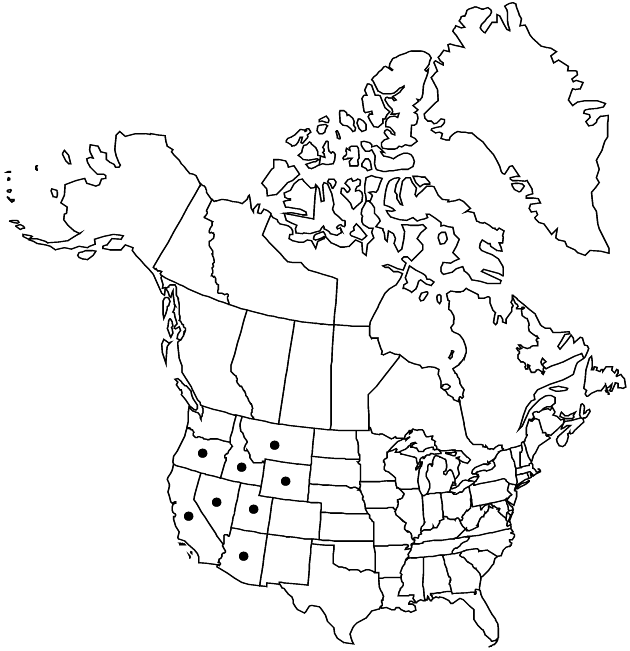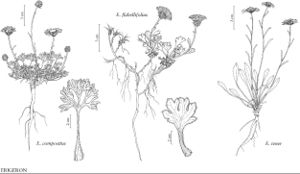Erigeron tener
Notes Compositae, 91. 1880.
Perennials, 2–15 (–20) cm; taprooted, caudex branches commonly relatively slender, lignescent. Stems erect, sparsely strigillose (hairs white, stiff), sometimes minutely glandular. Leaves mostly basal (persistent); (gray-green) blades 1-nerved spatulate, rhombic-elliptic to narrowly elliptic-ovate, (10–) 15–80 × 2–7 mm, margins entire (apices sharply acute), faces moderately to densely strigillose (hairs white, stiff), eglandular. Heads 1 (–3). Involucres 3–5 × 6–12 mm. Phyllaries in 2–3 series, sparsely to moderately hirsute, densely minutely glandular. Ray-florets (15–) 20–40; corollas blue to purple, 4–8 mm, laminae not coiling or reflexing. Disc corollas 2.5–4.1 mm. Cypselae 1.6–2.5 mm, 2-nerved, faces sparsely strigose; pappi: outer of setae, inner of 15–25 (–30) bristles. 2n = 18.
Phenology: Flowering Jun–Sep.
Habitat: Rocky or gravelly habitats, often in talus, cliff ledges, crevices, or along ridgetops, in Atriplex, sagebrush, pinyon-juniper, yellow pine, bristlecone pine, limber pine, or spruce
Elevation: 1700–3200(–3400) m
Distribution

Ariz., Calif., Idaho, Mont., Nev., Oreg., Utah, Wyo.
Discussion
Selected References
None.
